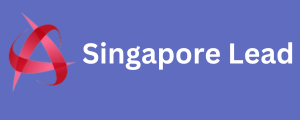In the digital age, capturing leads efficiently is critical to business success. A lead capture tool helps collect potential customers’ information—such as names, phone numbers, or emails—so you can follow up with targeted marketing. Whether you’re running a website, a social media campaign, or an email newsletter, having the right tools in place ensures that interested visitors don’t leave without a trace. For beginners, understanding how these tools work and how to use them effectively can significantly boost conversion rates and grow your customer base.
What Are Lead Capture Tools?
Lead capture tools are software applications or job function email list platforms designed to gather user information through online interactions. These tools are typically integrated into websites, landing pages, or pop-ups and serve as gateways to move casual visitors into your marketing funnel.
Common lead capture tools include:
-
Contact Forms: Basic forms that request details like name, email, and phone number.
-
Pop-Up Widgets: Timed or behavior-based pop-ups encouraging users to subscribe or download content.
-
Chatbots: Automated conversational tools that engage visitors and collect lead data in real-time.
-
Landing Pages: Standalone web pages built with a clear call-to-action (CTA) designed specifically for lead generation.
By using these tools, businesses can gather data ethically and effectively, creating opportunities for nurturing leads and converting them into customers.
Features to Look for in a Lead Capture Tool
Not all tools are created equal. When selecting a optimize email frequency to increase engagement lead capture tool, beginners should prioritize functionality, user experience, and integration capabilities.
Essential features include:
-
Customizable Forms: The ability to tailor fields and design to match your brand.
-
CRM Integration: Seamless syncing with platforms like HubSpot, Salesforce, or Mailchimp for automated follow-up.
-
Mobile Responsiveness: Ensure forms look and work great on any device.
-
A/B Testing: Allows testing of different versions to optimize conversion rates.
-
Analytics Dashboard: Tracks submissions, conversion rates, and user behavior.
Choosing a tool with these features helps streamline the lead generation process and supports long-term marketing efforts.
Best Practices for Using Lead Capture Tools
To get the most out of lead capture tools, consider the following best practices:
-
Keep It Simple: Ask only for essential information to reduce form abandonment.
-
Offer Value: Provide an incentive like a free eBook, discount, or exclusive content in exchange for contact details.
-
Use Clear CTAs: Your calls-to-action should be specific, benefit-driven, and easy to understand.
-
Test and Optimize: Regularly test your forms and landing pages to improve performance.
These practices ensure a better user experience while maximizing the chances of capturing quality leads.
Final Thought: Start Smart, Scale Strategically
Lead capture tools are foundational for building review business a robust marketing strategy. For beginners, starting with simple, user-friendly tools and applying best practices can deliver quick wins. As your confidence and needs grow, you can explore more advanced features and integrations to enhance efficiency. Remember, capturing leads is the first step—what you do with those leads afterward makes all the difference. Invest in the right tools, keep refining your approach, and watch your lead pipeline grow.
